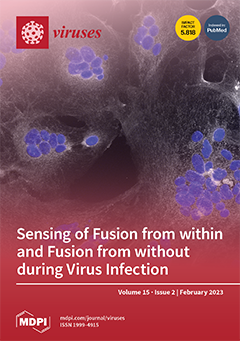Open AccessCommunication
Phage Therapy in Germany—Update 2023
by
Christian Willy, Joachim J. Bugert, Annika Y. Classen, Li Deng, Anja Düchting, Justus Gross, Jens A. Hammerl, Imke H. E. Korf, Christian Kühn, Simone Lieberknecht-Jouy, Christine Rohde, Markus Rupp, Maria J. G. T. Vehreschild, Kilian Vogele, Sarah Wienecke, Martin Witzenrath, Silvia Würstle, Holger Ziehr, Karin Moelling and Felix Broecker
Cited by 14 | Viewed by 7244
Abstract
Bacteriophage therapy holds promise in addressing the antibiotic-resistance crisis, globally and in Germany. Here, we provide an overview of the current situation (2023) of applied phage therapy and supporting research in Germany. The authors, an interdisciplinary group working on patient-focused bacteriophage research, addressed
[...] Read more.
Bacteriophage therapy holds promise in addressing the antibiotic-resistance crisis, globally and in Germany. Here, we provide an overview of the current situation (2023) of applied phage therapy and supporting research in Germany. The authors, an interdisciplinary group working on patient-focused bacteriophage research, addressed phage production, phage banks, susceptibility testing, clinical application, ongoing translational research, the regulatory situation, and the network structure in Germany. They identified critical shortcomings including the lack of clinical trials, a paucity of appropriate regulation and a shortage of phages for clinical use. Phage therapy is currently being applied to a limited number of patients as individual treatment trials. There is presently only one site in Germany for large-scale good-manufacturing-practice (GMP) phage production, and one clinic carrying out permission-free production of medicinal products. Several phage banks exist, but due to varying institutional policies, exchange among them is limited. The number of phage research projects has remarkably increased in recent years, some of which are part of structured networks. There is a demand for the expansion of production capacities with defined quality standards, a structured registry of all treated patients and clear therapeutic guidelines. Furthermore, the medical field is still poorly informed about phage therapy. The current status of non-approval, however, may also be regarded as advantageous, as insufficiently restricted use of phage therapy without adequate scientific evidence for effectiveness and safety must be prevented. In close coordination with the regulatory authorities, it seems sensible to first allow some centers to treat patients following the Belgian model. There is an urgent need for targeted networking and funding, particularly of translational research, to help advance the clinical application of phages.
Full article
►▼
Show Figures






